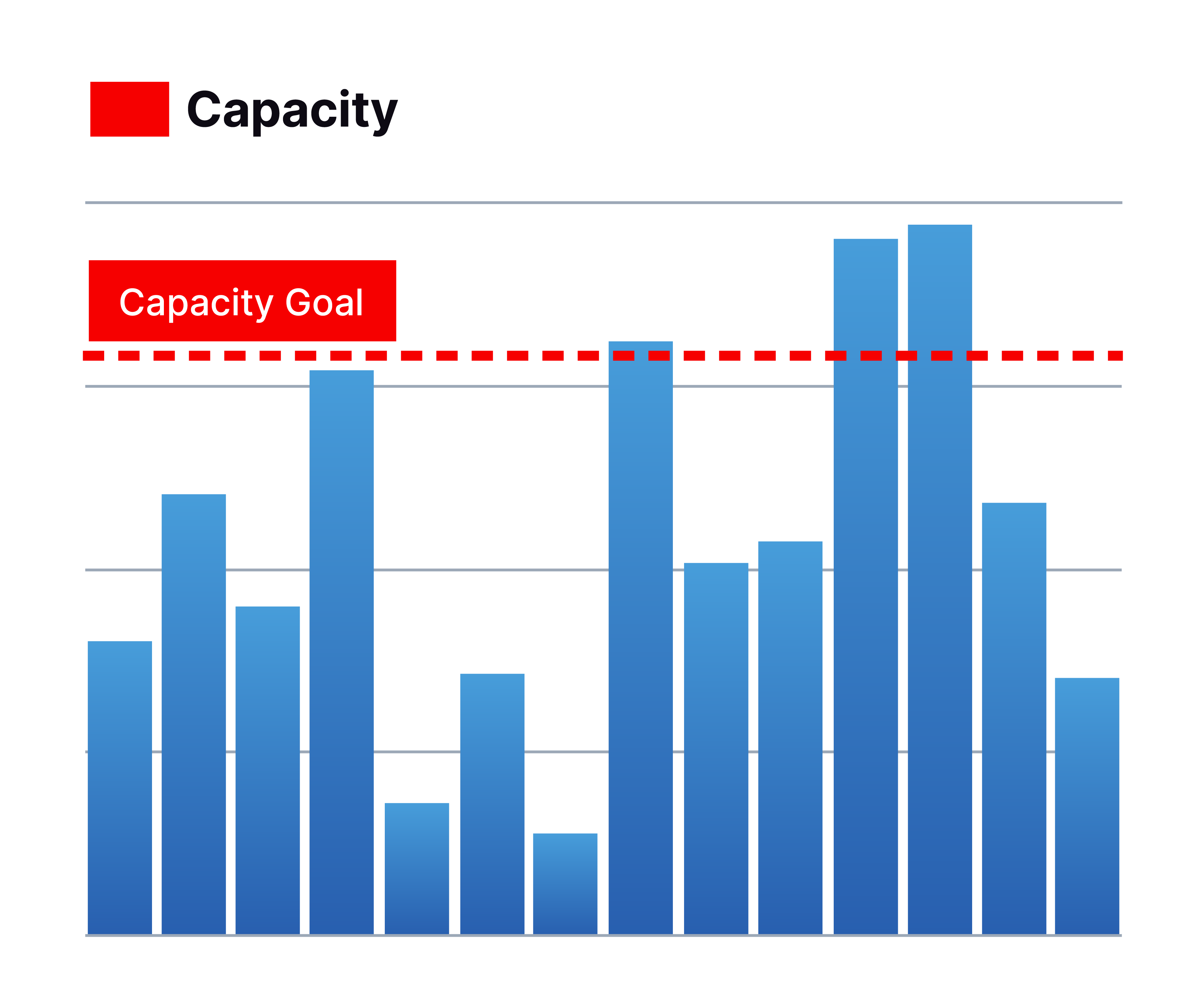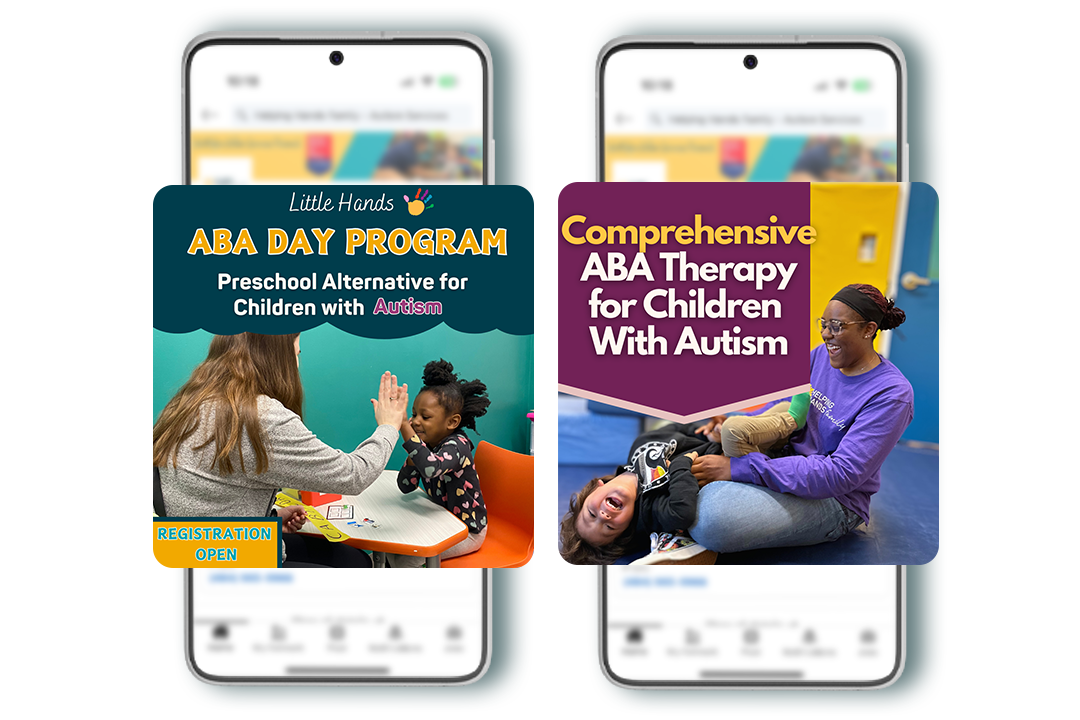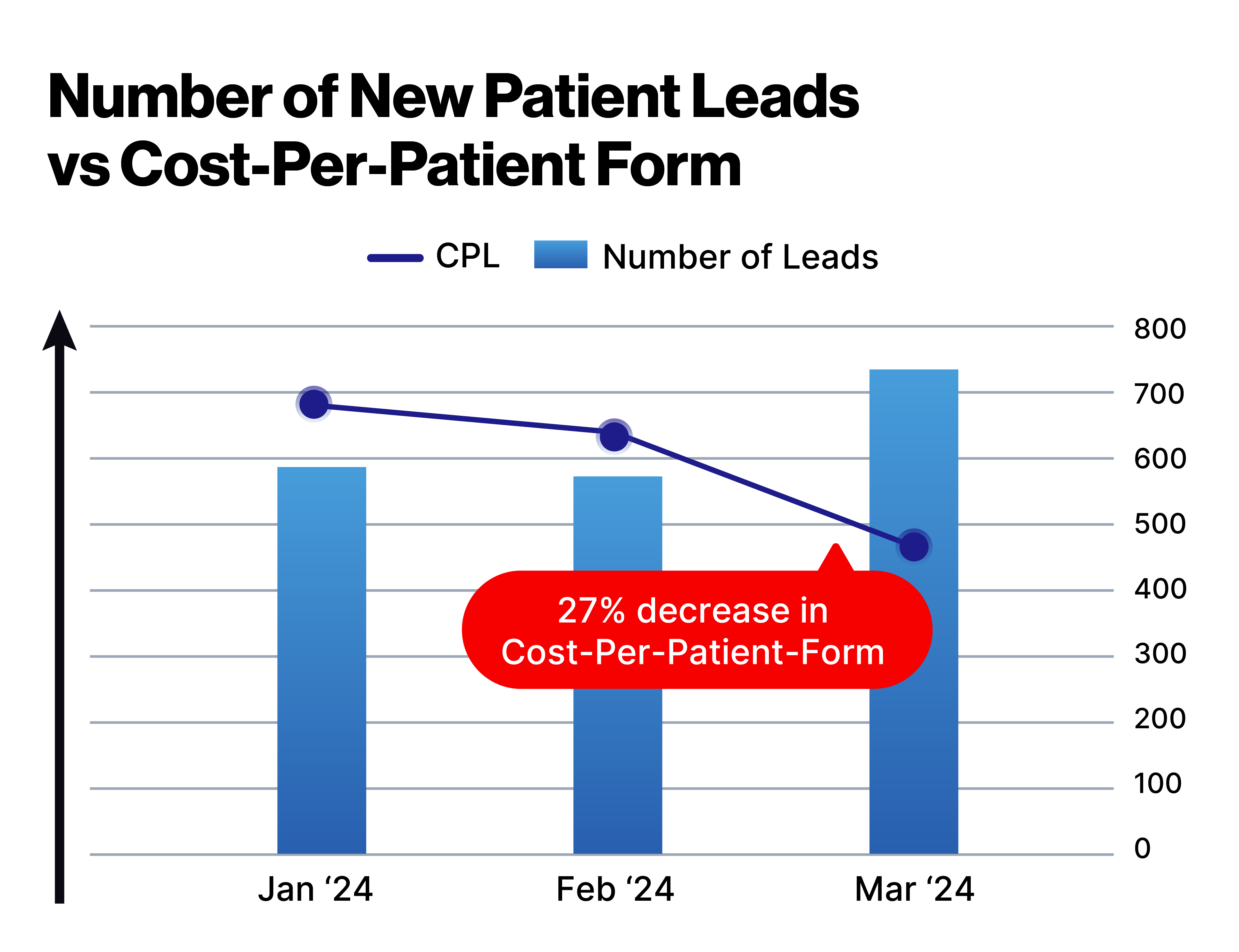Capacity-Informed Media Strategy Drives Efficient Lead Gen for ABA Therapy Brand
Marketing+Operations Alignment Drives Quality Client Acquisition Supported By Capacity
Cardinal’s data-driven approach combines sophisticated lead tracking for each lead stage with capacity-informed marketing to maximize budgeting efficiency. By aligning marketing with operations, our team ensures that every stage of the lead is tracked from document collection to Verification of Benefits, a crucial data point for any ABA provider. Strong marketing and operational alignment also ensure that the media strategy is being targeted correctly and that capacity is considered.
With dozens of locations across the Northeast, this ABA therapy brand continued to show strong growth. However, they recognized two challenges holding them back from reaching their full potential: poor lead quality and frequent staffing shortages. They engaged Cardinal Digital Marketing to address these challenges.
We worked with the client’s marketing team to show them which inputs were key to refining lead quality and ensuring that media campaigns were reaching the right audience—essential when the brand’s ideal client is a narrow band between ages 2 and 6. Our analytics team ensured that lead data by the verification stage was tracked in the client CRM and then passed to Google Ads. For talent acquisition, we helped them align their budget with up-to-date staffing numbers.
As a result, the marketing and operations teams aligned and processes were put in place so that all future client acquisition campaigns will be focused on qualified leads, and backed by the capacity to handle those new incoming clients.

Challenges:
- Staffing shortages & high turnover
- Narrow age range for qualified leads
- Waitlists complicate ad budgeting
Goals:
- Increase lead volume & quality
- Reduce cost per application
- Balance staffing with incoming leads
Improving Lead Quality in ABA
Many providers make the mistake of only optimizing for lead volume and not optimizing for qualified leads. However, in behavioral health, especially ABA, leads can be disqualified for a variety of reasons. It’s essential to understand what makes a qualified lead and why leads are getting disqualified, in order to feed better signals to platforms like Google Ads and refine your marketing strategy accordingly.
Lead Quality Issues
Insurance Coverage
A significant challenge in acquiring new clients is due to the unpredictability of insurance coverage, specifically with leads having Medicaid or Medicare. A percentage of leads would inevitably fall into this category.
Narrow Age Bracket
Because the provider only accepts clients 2-6 years old, finding qualified leads is difficult. Many submissions came in for clients 7-9 years old and were instantly disqualified.
Our Solution
Cardinal’s analytics team tracked the different stages of each lead:
- Document Collection
- Verification of Benefits
- Waitlist
- Start of Service
By connecting the client CRM to Google Ads and passing back vital signals like Verification of Benefits, Cardinal was able to dramatically improve performance and reduce CPL.
Aligning Marketing Budgets with Capacity
We implemented a dynamic system to constantly rebalance marketing investments in line with capacity needs, based on waitlist numbers by location shared by the client on a monthly basis.
- 0-2 person waitlist: High priority – needs more leads
- 5-7 person waitlist: Lower priority
- 10+ person waitlist: No longer accepting leads
Media campaigns are adjusted monthly to avoid spending where there isn’t capacity and focus on locations with higher needs and higher chances of a lead becoming a VOB.

Creating Messaging Strategies for Complex Journeys
Writing with parents in mind
Parents face many hurdles in finding care. Good messaging helps make ABA therapy more accessible, so parents can get the care they desperately need for their child. This required thoughtful wording in ads and landing pages to make the process as painless as possible.
Driving targeted recruitment
BCBA ads were driving leads to a third-party job portal, which didn’t provide much context for learning more about the company before an individual made the decision to apply. To encourage individuals to apply, we recommended a dedicated landing page with carefully chosen verbiage and highlights of the organization.

Marketing with Staffing In Mind
ABA providers nationwide struggle with high RBT turnover rates, yet these roles are crucial for operational efficiency. Providers must maintain a steady pipeline of RBT applications to be reliably staffed up. We collaborated closely with the client’s marketing and operations team to ensure that staffing goals were translated into campaign strategy and budgets.
Client acquisition guided by staffing
We implemented processes to constantly adjust client acquisition campaigns based on staffing levels, to avoid overinvesting in client acquisition that isn’t supported by sufficient staff as staffing fluctuates.
Recruitment budgets increasing with waitlists
We adjusted recruitment budgets each month based on the latest waitlist numbers, to ensure under-staffed clinics received more recruitment dollars, and that clinics with high search demand weren’t leaving clients on the table due to a lack of RBTs and BCBA staff.

Achieving Higher Quality Leads At Lower Cost
Cardinal transformed this ABA therapy provider’s marketing by working with their marketing team to facilitate a bridge between marketing and operations and ensure that all marketing was focused on addressing current needs. The processes we put in place had an immediate positive impact for the client, driving not only a significant increase in new client leads, but an even more significant increase in conversion rates—for both new clients and recruitment candidates. By restructuring the marketing campaigns to rely on up-to-date relevant data directly from the client, we were able to effectively target our ad spending, placement, and messaging, resulting in tangible cost savings for the client.

Lower Cost for Qualified Leads
We helped increase the quality of the leads by optimizing towards form submissions instead of clicks. We actively adjusted ad copy and audiences across Google and Meta to address quality issues and reduce the volume of unqualified leads that were from categories that would be disqualified (e.g., leads expecting to pay through Medicaid/Medicare where ABA isn’t covered, leads for children older than the age 6 cutoff, etc.). We also improved marketing efficiency by reallocating the budget based on capacity data to determine the priority locations where new leads would be most valuable.
Client Acquisition Results (January – March 2024)
- 27% decrease in cost per form submission
- 44% improvement in CVR
- 27% increase in qualified leads.
Significant Decrease in Recruitment Campaign CPLs
When the client reduced their budget for recruitment campaigns, we knew we had to focus on finding the most efficient leads. We separated our recruitment marketing into high-intent, mid-intent, and low-intent categories. Then we readjusted the marketing budget by determining how much to allocate for each category and what ratio would ensure that volume goals could be met. In addition, we set up a dedicated BCBA landing page with messaging crafted to improve conversion rates. This allowed us to more precisely target promising candidates, resulting in a great increase in recruitment efficiency.
Recruitment Results (April – June 2024)
- Cost per application decreased by 53%
- CVR improved by 172%
